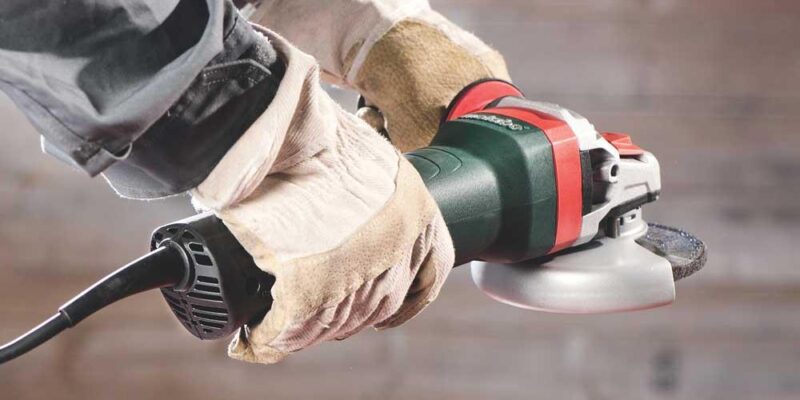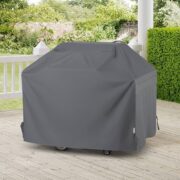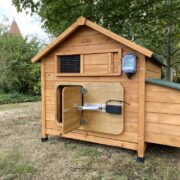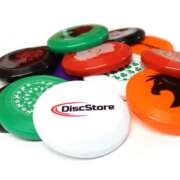Angle grinders are powerful tools that can be used for various tasks, including cutting and polishing. While they are incredibly versatile and can help you complete many projects, they can also be dangerous if not used properly.
To ensure your safety when using an angle grinder, it is essential to understand the risks and take the necessary precautions. This guide overviews the safety risks associated with angle grinders and tips for properly using and maintaining them. If you want to learn more about grinders themselves, check out all grinder guides and reviews online.
What is an angle grinder?
An angle grinder is a power tool that uses a rotating disc to cut, grind or polish materials. It’s usually used for bigger projects like cutting masonry or sharpening tools. Angle grinders are powerful, and their discs can spin up to 10,000 revolutions per minute, so it’s crucial to understand how to use them safely.
Angle grinders can be powered by electricity, gasoline, or compressed air, so the particular safety measures for each type of grinder will differ. Read the instructions manual for your specific angle grinder to familiarize yourself with the safety features and instructions.
Understanding the Safety Risks of an Angle Grinder
Using an angle grinder for the first time can be daunting. Before you get started, it is essential to understand the safety risks that come with using an angle grinder. It is a powerful tool that can cause serious damage if misused.
The most common dangers of angle grinders include cuts, burns, and eye injuries. It is also possible to cause damage to the tool itself if it is not used according to safety guidelines. To prevent these risks, it is vital to understand the features of an angle grinder and how to use it safely. Long sleeves, safety glasses, and dust masks should be worn when using one to reduce the risk of injury.
Additionally, ensure the area where the angle grinder will be used is free of any objects that could be damaged or thrown by the tool. Finally, checking the angle grinder for any defects before use is necessary.
What to Wear When Using an Angle Grinder
Before using an angle grinder, ensure you wear the proper safety gear. Safety glasses with side shields should be worn to protect your eyes from sparks and debris, while a face shield can be used with safety glasses. Hearing protection should also be worn to protect your ears from the loud noise of an angle grinder.
Additionally, thick leather gloves should be worn to protect your hands from the heat generated by the grinder and any sparks or sharp edges. Lastly, wearing long pants, a long-sleeved shirt, and closed-toe shoes can protect you from flying debris.
Preparing to Use an Angle Grinder
When preparing to use an angle grinder, the grinder should be in good condition, and the grinding disc should be the correct size for the job. Inspect the grinder for damage, such as a loose power cable or broken switches. Check that the grinding disc is securely attached and the right size for the job.
If needed, you can use a spacer to adjust the size of the grinding disc to fit the task. The area around the grinder should be free of debris, liquids, and flammable materials. Once you have checked the condition of the grinder and the grinding disc and ensured the area is safe, you are ready to begin.
Using an Angle Grinder
Using an angle grinder requires skill, patience, and safety precautions. Read the user manual and understand how to use the grinder correctly before operating it. Start the grinder by turning the switch as far as it can go in a clockwise direction.
The grinding disk should be positioned at a 90-degree angle relative to your working surface. Be aware of your hand position while using the grinder; keep both hands on the handle and behind the guard. Gently move the grinder in a circular motion, allowing the disk to do the work.
Move the grinder evenly over the entire surface. When you have finished grinding, turn the switch off and let the disk come to a complete stop before setting it down.
Maintaining an Angle Grinder
When your angle grinder is not in use, keep it in a safe place and perform regular maintenance. This includes cleaning the grinder and checking it for any damage or wear. If there is any wear or damage, you should replace the parts before using the grinder again.
The power cord should be in good condition, and if it’s frayed or worn, replace it with a new one. Additionally, periodically inspect the grinding disc to ensure it’s in good condition, and replace it if worn or damaged. Finally, the grinder must be lubricated with the correct oil, and the safety guard should be securely attached.
Cleaning Up After Using an Angle Grinder
Once you’re done using the angle grinder, clean it properly. First, remove the cutting disc and replace it with the appropriate guard. Then, use a brush or rag to remove metal shavings, dust, and debris from the grinder.
Also, check for damage or wear and tear. If you find any, replace the parts before using the grinder again. Finally, store the grinder in a cool, dry place, and keep it away from children.
Conclusion
An angle grinder is a powerful and helpful tool when used correctly. However, the risks of using an angle grinder must be taken seriously. To ensure the safe use of an angle grinder, it is crucial to understand the safety risks, wear the proper protective gear, prepare the work area and the grinder, use it correctly, and maintain and clean it.
Following these steps will help you safely operate an angle grinder. By educating yourself and practicing using the tool, you can minimize the risk of injury and maximize the use of your angle grinder.










Comments